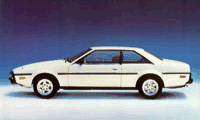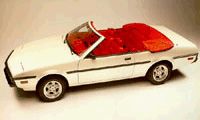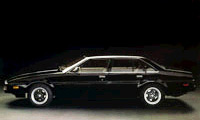 | Bitter SC |  |
| SC Coupé | SC Cabriolet | SC Sedan |
 click thumbnail to see more |
 click thumbnail to see more |
 click thumbnail to see more |
When Opel launched the technically advanced Senator in autumn 1978, Erich Bitter had been at work for a year on a CD replacement. He started talks with Opel's management in 1977 about using the Senator's engine and running gear for his new car. Opel had been very impressed with the CD and were pleased to offer the Senator platform and mechanics and some technical help. Unlike the CD, Bitter had to develop the new car himself at a cost of two years development time and DM 8 million. The finance was raised by inviting and receiving investment from a Swiss industrialist and a handful of investment partners.
Initially Erich Bitter considered a design embodying strong frontal overtones of the CD with a more practical, but less attractive, back half using a more compact estate car style. Bitter dropped this concept in favour of the rough SC design which he sketched in the late sixties. Bitter's design was finally refined for production by Opel stylists Henry Haga and George Gallion. At the outset of the detailed SC design programme Bitter enlisted the help of Italian stylist Michelotti to carry out the engineering detailing for the body. The SC was aerodynamically tested in Pininfarina's wind tunnel.
The arrangement Erich Bitter had with Baur of Stuttgart to build the CD for him came to an end when the last CD's came off the production line at the beginning of 1979. As no Bitters were built for almost two years in 1979 and 1980, Baur took on other work to fill the gap left by CD production and Bitter had to find another company to build the SC.
Bitter could not find a German company to produce the bodyshells and interiors for the SC, and turned to Italy. He formed a company called "Bitter Italia" to organise and finance the manufacture of SC bodies and interiors ready for their mating to the Opel mechanical components at Bitter's works at Schwelm.
The fabrication of the body panels and their subsequent assembly into body shells was sub contracted to Turin based OCRA. A few months after the first SC's had been produced some cars started to show the first signs of rust. OCRA had used recycled steel to make the body panels.The first class reputation Bitter had built up with the CD was under serious threat. OCRA built 79 shells before losing the contract in early 1982 in favour of Maggiore. They were also Turin based, but were long established and had an excellent reputation. At that time they were producing shells for Maserati and Bristol. Another Turin company, SALT, produced the beautiful nappa leather interiors.
From 1981 to 1983 Bitter's assembly staff mated the Opel engine, transmission, suspension, axles, brakes, wheels, etc with the Turin supplied bodies and interiors. Bitter was initially able to build only one car a week, but output doubled later in 1982. Erich Bitter was looking to expand. The prototype SC Cabriolet was already on the scene and he had plans for a 4-door version, as well as a new compact convertible called the Bitter Rallye which was to be based on Opel's Manta. The one acre site in Schwelm was unable to cope with the projected expansion, and Bitter started to look for production elsewhere. In early 1983 he found Steyr Daimler Puch at Graz in Austria who managed to build 3 to 4 cars a week until late 1985 when money became tight and production eased right down.